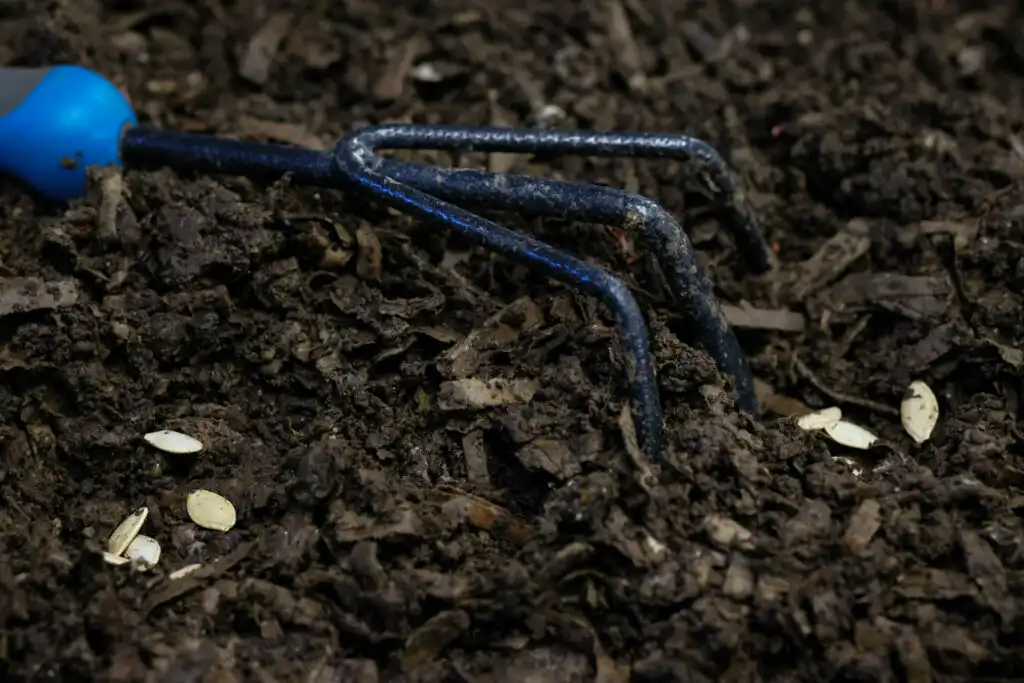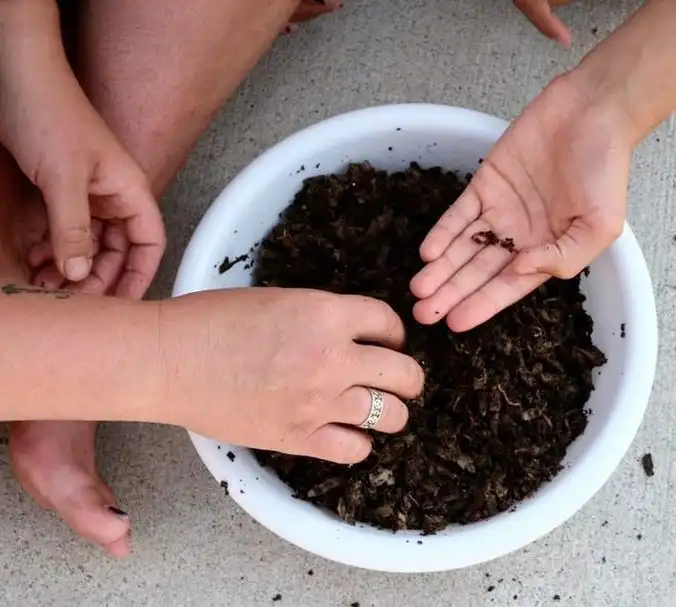Fall garden care is often overlooked. Fall is the perfect time to get a jump on applying soil amendments, including organic compost and vermicompost (or worm castings). This gives them time to break down over the winter so they’re ready to work into the soil come spring.

Benefits Of Using Vermicompost Or Worm Castings
Worm castings, like other composts, are an excellent soil amendment. Vermicompost improves seed germination and plant growth and development. The benefits of using worm castings or vermicompost include:
- adding slow release, plant-available nutrients
- provides nitrogen, phosphorus and potassium (NPK), macronutrients required by all plants
- includes a compliment of micronutrients not found in most synthetic fertilizers
- adding soil organic matter
- improves moisture retention
- improves porosity, texture and tilth (makes it fluffy and less compact(able))
- allows soil to better store and release essential nutrients
- improving ability of soil to buffer against changes in pH
- introduce beneficial microbes and fungi to soil, helping the ‘good guys’ out compete plant diseases and pests
Apply Compost in fall for spring benefit
One of the benefits of using composts as a soil amendment is that nutrients are released slowly and they serves as a inoculant for microbial community that needs time to reproduce to have their full effect. The trade-off here is that the benefits of using natural soil amendments are not immediate. If you apply compost in the spring, you may not get the full benefit, as it won’t have had time to become incorporated into your soil’s ecosystem.
If your intention is to mix vermicompost into your garden, you may have better success turning it into drier soil in the fall, rather than trying to work with cold, wet soil in the spring.
Doing a little bit of fall garden care now will help you have a healthy, productive garden come spring.
How to apply vermicompost to your garden in fall
It is impossible to add too much healthy compost to any garden. A little bit goes a long way, though, so don’t hesitate to add what you are able.
The best way to apply compost is by lightly mixing it into the soil. Your soil will thank you for minimizing the physical disturbance, so don’t get too excited turning over every bit. Lightly rake your compost in and water generously. Water will help carry fine organic matter and microbial community members into the soil where they won’t dry out and die in the sun. Unless you’re watering so much that you’re eroding your soil, you can’t over-water in the context of getting compost safely into you soil.
Mulch is an excellent way to reduce erosion, retain moisture and keep your soil healthy. Straw, wood chips, leaves or grass clippings are good options for mulching in the fall. A solid mulch layer will help get the most out of your fall vermicompost application.
Summary
Fall is the best time to get vermicompost into your soil for maximum benefit during the growing season. The nutrients and microbial community need time to become fully incorporated into your soil. We offer fresh vermicompost that has a thriving community of beneficial microbes and fungi.
You can make your own a rich soil amendment from kitchen scraps, food waste and yard clippings. Vermicomposting is a faster process than traditional hot-compost methods. Watch out our blog for more information on how you can compost with worms! You’ll be able to do this all year round indoors, We offer workshops on how to get your own vermicompost going. We breed our own red wiggler compost worms and provide them for sale.

Be sure to follow Worm Wrangler or Facebook and Instagram for the latest in blog posts, where to find me at community farmers’ markets and to keep up to date on workshops that I’m hosting. You can also sign up for my newsletter for exclusive content. Until next time, happy fall gardening!
